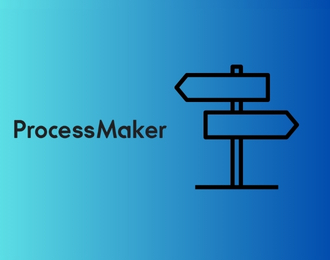What is Onboarding Contractors?
Contractor onboarding is the systematic process of integrating temporary or project-based workers into an organization while ensuring compliance, security, and clear role expectations. Unlike full-time employees, contractors require a streamlined onboarding approach that includes contract agreements, payment setup, access provisioning, and regulatory compliance checks.
For example, when a company hires an IT consultant for a cybersecurity project, onboarding involves signing NDAs, configuring system access permissions, and establishing project deliverables. In construction, external contractors must complete safety certifications, insurance verification, and site-specific training before beginning work.
Without a structured onboarding process, organizations face delays, miscommunication, security vulnerabilities, and potential legal issues. A well-designed contractor onboarding system ensures smooth collaboration while maintaining regulatory compliance and operational efficiency.
Why Is Contractor Onboarding Important?
Contractor onboarding directly impacts compliance, productivity, and project success rates. Unlike full-time employees, contractors often work on compressed timelines across multiple projects, making efficient onboarding essential for rapid deployment without compromising legal or operational standards.
Compliance and Risk Management: Proper contractor onboarding ensures adherence to labor laws, tax regulations, and worker classification rules. Misclassifying contractors as employees or failing to collect required documentation—such as contracts, tax forms (W-9), or insurance certificates—can result in substantial fines and legal disputes. According to the IRS, misclassification penalties can reach $50 per Form 1099 plus 1.5% of wages paid, with additional penalties for intentional misclassification.
Operational Efficiency: Effective onboarding establishes clear expectations around project scope, timelines, deliverables, and communication protocols. Research shows that contractors with structured onboarding are 70% more likely to complete projects on time and within budget compared to those without formal processes.
Security and Access Control: Contractors often require access to sensitive systems and data. A systematic onboarding process ensures appropriate security clearances, access permissions, and compliance with data protection regulations like GDPR or CCPA before granting system access.
Scalability and Consistency: Organizations hiring multiple contractors across regions benefit from standardized processes. Automated onboarding workflows reduce administrative overhead by up to 60% while ensuring consistent experiences regardless of location or department.
Key Steps in Contractor Onboarding
Successfully onboarding contractors requires a structured, compliant, and scalable process. Here are the essential steps for effective contractor integration:
1. Contractor Information Collection
Gather essential details including full name, contact information, tax identification numbers, business entity status, and banking information. Implement secure online forms with auto-validation features that integrate directly with vendor management or HR systems to eliminate manual data entry and reduce errors by up to 85%.
2. Contract and Agreement Signing
Issue independent contractor agreements, non-disclosure agreements (NDAs), and project-specific contracts through digital signature platforms. Electronic signature solutions reduce contract turnaround time from days to hours while maintaining legal enforceability and audit trails.
3. Compliance and Background Checks
Automate mandatory compliance processes including background verification, insurance validation, and regulatory certifications. Integration with third-party verification services accelerates approval times while ensuring contractors meet all legal and safety requirements.
4. Tax and Payment Setup
Collect required tax documentation (W-9 for U.S. contractors, equivalent forms for international workers) digitally. Simultaneously onboard contractors into payment systems by securely capturing preferred payment methods and schedules. Proper tax setup prevents 1099 reporting errors that affect 40% of businesses annually.
5. Access Provisioning and Tool Setup
Grant contractors access to necessary tools, platforms, and documentation relevant to their roles. Automated provisioning workflows can assign credentials, configure project management tools, and deliver onboarding materials—enabling contractors to begin productive work immediately.
6. Orientation and Policy Acknowledgment
Share company policies, project timelines, communication protocols, and training resources through automated workflows. Digital acknowledgment captures contractor understanding while maintaining compliance records.
7. Project Assignment and Team Introduction
Connect contractors with project teams, stakeholders, and relevant documentation. Automated introductions and resource sharing accelerate integration and reduce time-to-productivity.
8. Performance Tracking Setup
Establish performance metrics, reporting requirements, and milestone tracking systems. Clear expectations and measurement criteria improve project outcomes and contractor satisfaction.
9. Ongoing Monitoring and Documentation
Maintain centralized digital records of completed onboarding steps, signed documents, and compliance verifications. This ensures audit readiness and streamlines future re-engagement processes.
How to Automate the Onboarding Process for Contractors?
Manual contractor onboarding creates bottlenecks, increases error rates, and delays project starts. Automation eliminates these inefficiencies while ensuring compliance and consistency across all contractor engagements.
FlowForma Copilot enables organizations to create sophisticated onboarding workflows using simple prompts, transforming complex manual processes into streamlined automated systems. Here's how to implement automated contractor onboarding:
Step 1: Generate Your Workflow
FlowForma Copilot accepts multiple input types—text prompts, uploaded diagrams, or voice commands. Simply describe your contractor onboarding requirements and click "Generate" to create a structured workflow instantly.
Step 2: Review and Customize
Examine the generated process flow to ensure it meets your specific requirements. When satisfied with the structure, click "Build" to transform it into a fully functional automated workflow.
Step 3: Configure Form Fields
Expand workflow sections to review suggested questions and data collection points. Modify fields, add validation rules, and customize the interface to align with your business requirements and compliance needs.
Step 4: Implement Dynamic Logic
Add conditional rules by clicking "Add Rule" and selecting appropriate trigger conditions. This creates intelligent workflows that adapt based on contractor type, project requirements, or regulatory needs.
Step 5: Save Your Progress
Click "OK" to save rule configurations and ensure your workflow logic is properly stored.
Step 6: Define Automated Actions
Specify actions triggered by conditional rules—such as sending specific documents, granting system access, or notifying team members. Click "OK" to apply these automated responses.
Step 7: Finalize and Save
After completing all configurations, click "Save" to store your automated contractor onboarding process and make it available for deployment.
Step 8: Test Your Workflow
Click "Test Form" to preview real-time workflow operation. This validation step ensures all logic, conditions, and integrations function correctly before going live.
Step 9: Deploy Your Automated System
Your complete Digital Contractor Onboarding process is now ready for deployment. FlowForma Copilot has transformed simple instructions into a fully automated, intelligent workflow in minutes rather than weeks.
Common Contractor Onboarding Challenges and Solutions
Organizations frequently encounter specific obstacles when implementing contractor onboarding processes. Understanding these challenges and their solutions helps create more effective systems.
Challenge 1: Inconsistent Documentation Requirements
Problem: Different departments or regions may have varying documentation requirements, leading to confusion and compliance gaps.
Solution: Standardize documentation requirements across all departments while allowing for role-specific additions. Use automated workflows that adapt based on contractor type, location, and project requirements.
Challenge 2: Slow Approval Processes
Problem: Manual approval chains create bottlenecks, delaying contractor starts and impacting project timelines.
Solution: Implement parallel approval workflows with automated escalation. Set time-based triggers that route approvals to backup approvers if primary approvers don't respond within defined timeframes.
Challenge 3: Security Access Delays
Problem: IT departments often struggle to provision access quickly while maintaining security standards.
Solution: Create pre-approved access templates based on contractor roles. Automate provisioning for standard access levels while flagging special requirements for manual review.
Challenge 4: Payment Setup Complications
Problem: Complex payment processes delay contractor compensation and create administrative overhead.
Solution: Integrate onboarding workflows with payroll and accounting systems. Capture payment preferences during initial onboarding and validate banking information automatically.
Measuring Contractor Onboarding Success
Effective contractor onboarding requires continuous measurement and optimization. Key performance indicators help organizations identify improvement opportunities and demonstrate ROI.
Essential Metrics to Track
Time-to-Productivity: Measure the duration from contractor hire to first deliverable. Effective onboarding reduces this metric by 40-60% compared to manual processes.
Onboarding Completion Rate: Track the percentage of contractors completing all required onboarding steps. Automated workflows typically achieve 95%+ completion rates versus 70-80% for manual processes.
Compliance Score: Monitor adherence to regulatory requirements and documentation completion. Automated compliance checking reduces violations by up to 90%.
Contractor Satisfaction: Survey contractors about their onboarding experience. Streamlined processes typically achieve satisfaction scores above 4.5/5.0.
Administrative Cost per Contractor: Calculate total administrative time and resources required per contractor onboarding. Automation reduces these costs by 50-70%.
Optimization Strategies
Regular Process Review: Conduct quarterly reviews of onboarding workflows to identify bottlenecks and improvement opportunities.
Feedback Integration: Incorporate contractor and internal team feedback to refine processes continuously.
Technology Updates: Stay current with integration capabilities and new automation features that can enhance efficiency.
Benchmarking: Compare your metrics against industry standards to identify performance gaps and opportunities.
Legal and Compliance Considerations
Contractor onboarding must address complex legal requirements that vary by jurisdiction, industry, and contractor type. Automated systems help ensure consistent compliance while reducing legal risks.
Worker Classification Compliance
Proper worker classification is critical to avoid misclassification penalties. The Department of Labor's economic reality test examines factors including:
- Nature and degree of control over work
- Permanency of relationship
- Investment in equipment or materials
- Skill required and initiative exercised
- Opportunity for profit or loss
Automated onboarding systems can incorporate classification questionnaires and flag potential misclassification risks for legal review.
Tax Documentation Requirements
Different contractor types require specific tax documentation:
- U.S. Citizens/Residents: Form W-9 (Request for Taxpayer Identification Number)
- Foreign Contractors: Form W-8BEN (Certificate of Foreign Status)
- Business Entities: Form W-9 with appropriate business classification
Automated systems ensure correct forms are collected based on contractor classification and maintain secure document storage for audit purposes.
Data Protection and Privacy
Contractor onboarding involves collecting sensitive personal information subject to various privacy regulations:
- GDPR: Requires explicit consent for data processing and provides data subject rights
- CCPA: Grants California residents rights regarding personal information collection and use
- Industry-Specific Regulations: Healthcare (HIPAA), financial services (SOX), and other sectors have additional requirements
Implement automated consent management and data retention policies to maintain compliance across jurisdictions.
Best Practices for Contractor Onboarding
Implementing these proven practices ensures optimal contractor onboarding outcomes while minimizing risks and maximizing efficiency.
Standardize the Onboarding Workflow
Create repeatable, structured processes for all contractor types while allowing for role-specific customizations. Use workflow automation tools with built-in compliance checks to ensure consistent execution across departments and regions.
Automate Documentation and eSignatures
Digital platforms for contract execution, document storage, and signature tracking reduce turnaround times by 75% while maintaining legal enforceability. Implement automated reminders for incomplete signatures and document expirations.
Clearly Define Roles, Expectations, and Deliverables
Communicate project scope, timelines, reporting structures, and performance expectations during onboarding. This reduces rework by up to 40% and improves contractor satisfaction scores.
Provide Early Access to Tools and Resources
Configure accounts and access credentials before contractor start dates. Include comprehensive onboarding materials, team contact information, and project documentation to enable immediate productivity.
Track Compliance and Maintain Central Records
Maintain centralized digital records of all signed documents, onboarding progress, and compliance status. This supports audit readiness and streamlines re-engagement for future projects while reducing administrative overhead by 60%.
Implement Continuous Improvement
Regularly review onboarding metrics, gather feedback from contractors and internal teams, and optimize processes based on performance data. Organizations with continuous improvement practices achieve 25% better onboarding outcomes year-over-year.
Conclusion
This comprehensive guide demonstrates how to transform contractor onboarding from a manual, error-prone process into an automated, compliant, and efficient system. The 9-step automation approach—from information collection through ongoing monitoring—addresses common challenges while ensuring regulatory compliance and operational excellence.
After reading this article, your immediate next steps should include: auditing your current contractor onboarding process to identify bottlenecks and compliance gaps, documenting your specific requirements and workflows, and selecting appropriate automation tools that integrate with your existing systems. Remember that successful automation requires stakeholder buy-in, proper testing before deployment, and continuous monitoring to ensure optimal performance. Additionally, ensure your legal and compliance teams review automated workflows to verify adherence to current regulations and industry standards.
FlowForma's no-code automation platform empowers organizations to digitize complex contractor onboarding processes without IT dependency, reducing administrative overhead by up to 60% while improving compliance and contractor satisfaction. Transform your contractor onboarding today with FlowForma Copilot and experience the efficiency of intelligent automation. Schedule your personalized demo now to see how FlowForma can streamline your contractor management processes.
.png) By
By 




